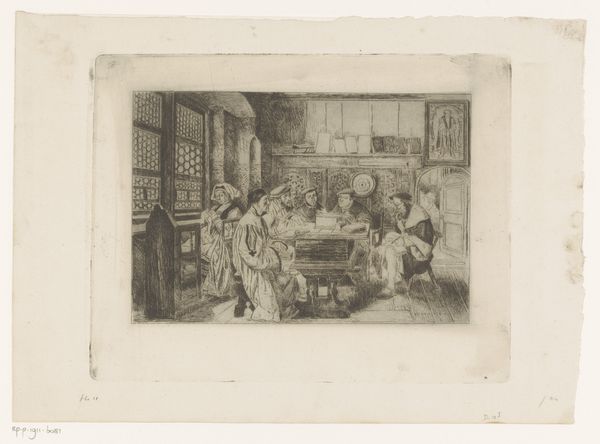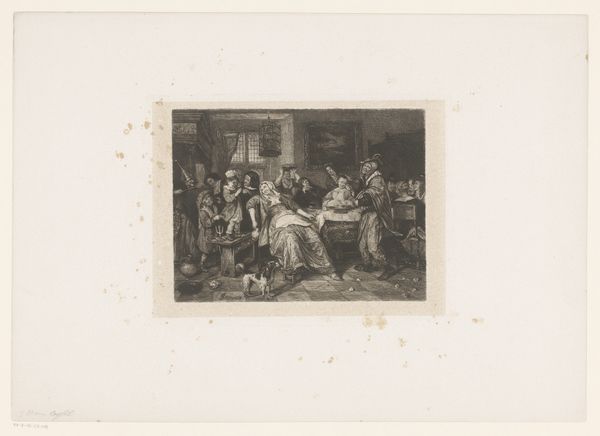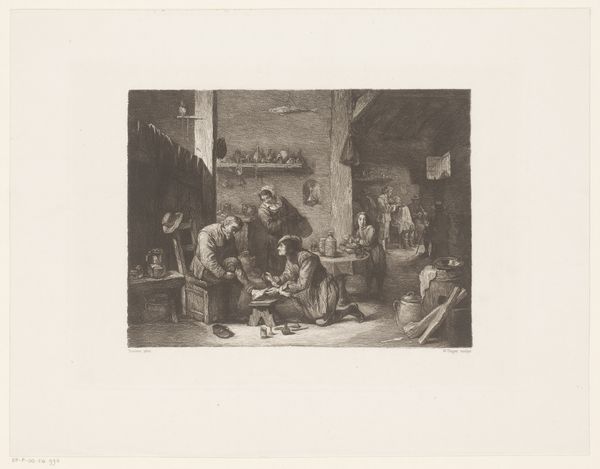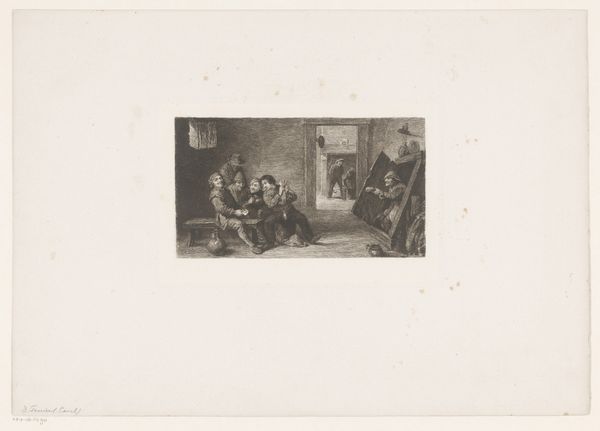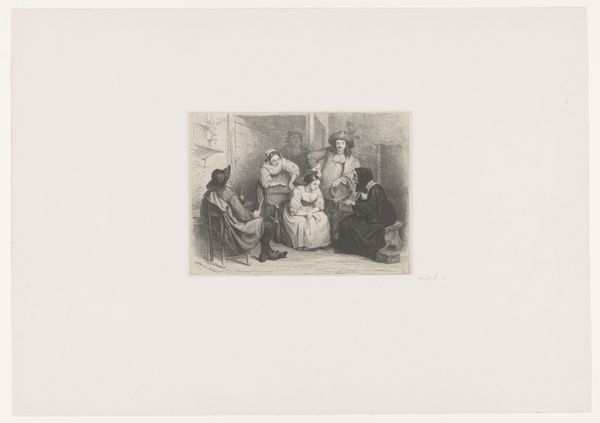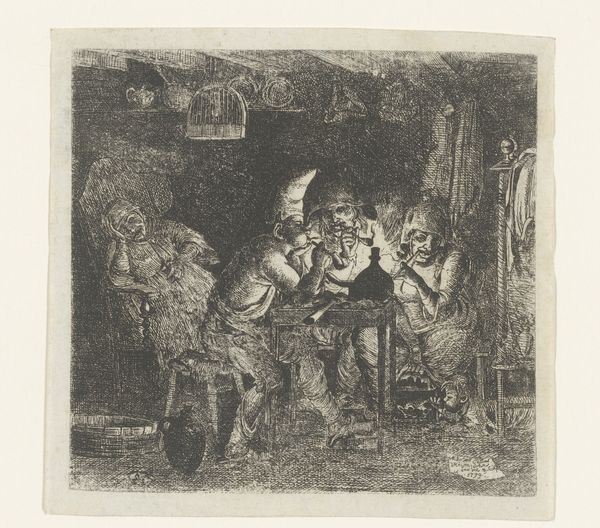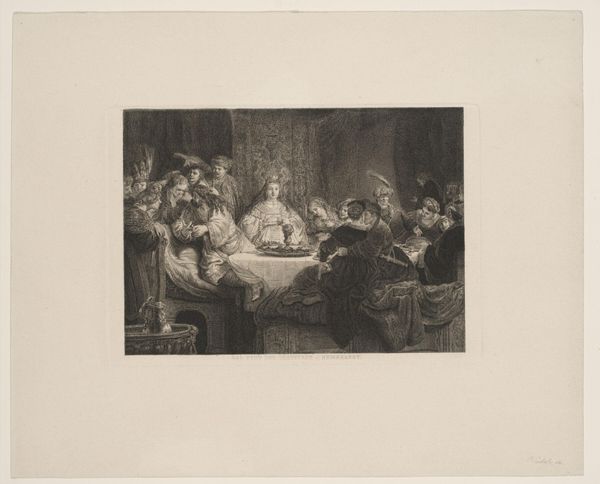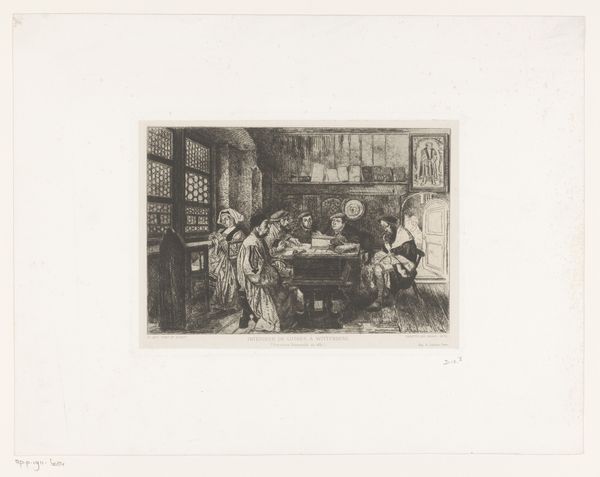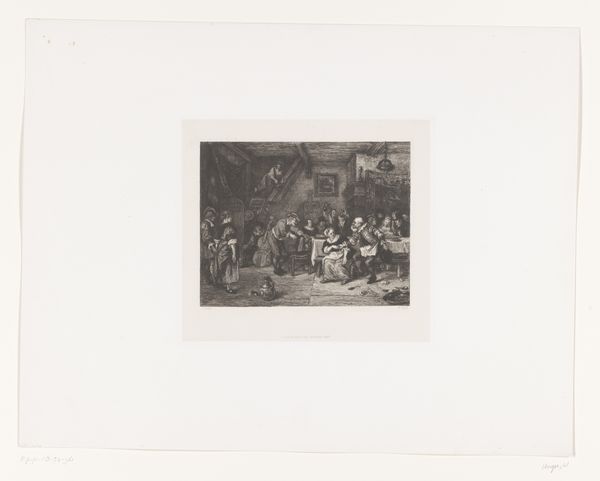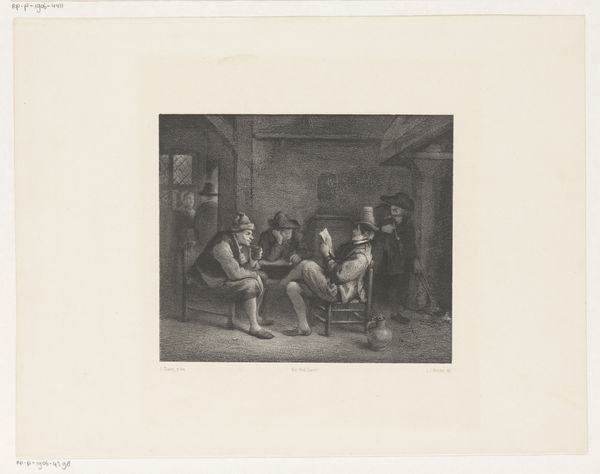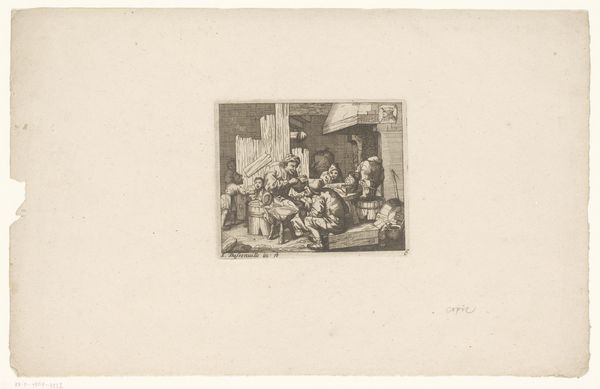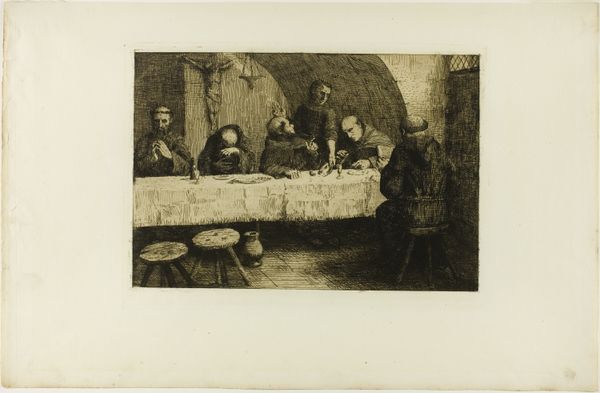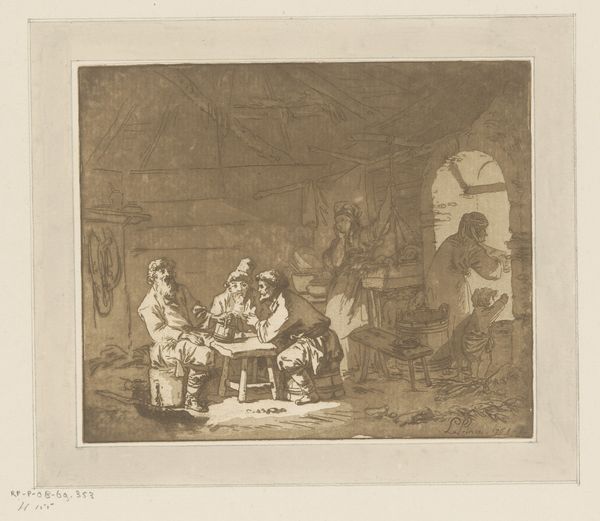
print, etching
# print
#
etching
#
figuration
#
genre-painting
#
realism
Dimensions: height 178 mm, width 241 mm
Copyright: Rijks Museum: Open Domain
Editor: Here we have A. Pierre’s "Groep mannen zit aardappels te schillen," an etching printed before 1913. The mood feels somber, communal. So many people focused on one task. What stands out to you? Curator: The first thing I see is the sheer weight of labor represented. Look at how the figures are arranged around the potatoes, almost huddled together. It speaks to the social and economic realities of the time. I'm curious, do you notice any specific details that hint at their class or status? Editor: Well, their clothing looks plain, and the setting is very simple. Almost claustrophobic. Curator: Exactly. The etching embodies a Realist style, where the focus shifts from idealizing subjects to depicting everyday life, specifically the lives of working-class individuals. The act of peeling potatoes transforms into a statement. A political one. This kind of directness, stripping away romanticism, can be seen as an effort to engage with social issues of the time. Consider who is represented here – men engaged in domestic labor, what might this composition be suggesting about the roles of masculinity? Editor: That’s really interesting. I hadn’t thought about the political implications of a seemingly simple scene. How radical! Curator: Precisely. And by depicting it through printmaking, which is more accessible than painting, the artist broadens the potential audience for this social commentary. The piece, therefore, becomes part of a broader discourse of social critique of labor practices. What would you take away from looking at this piece in the 21st century? Editor: I guess it highlights how essential but often unseen labor can be, even today. Thanks for pointing that out. It’s given me a lot to think about regarding art as social commentary. Curator: And it's a vital reminder to examine the narratives we often overlook, uncovering stories embedded within seemingly ordinary moments.
Comments
No comments
Be the first to comment and join the conversation on the ultimate creative platform.
